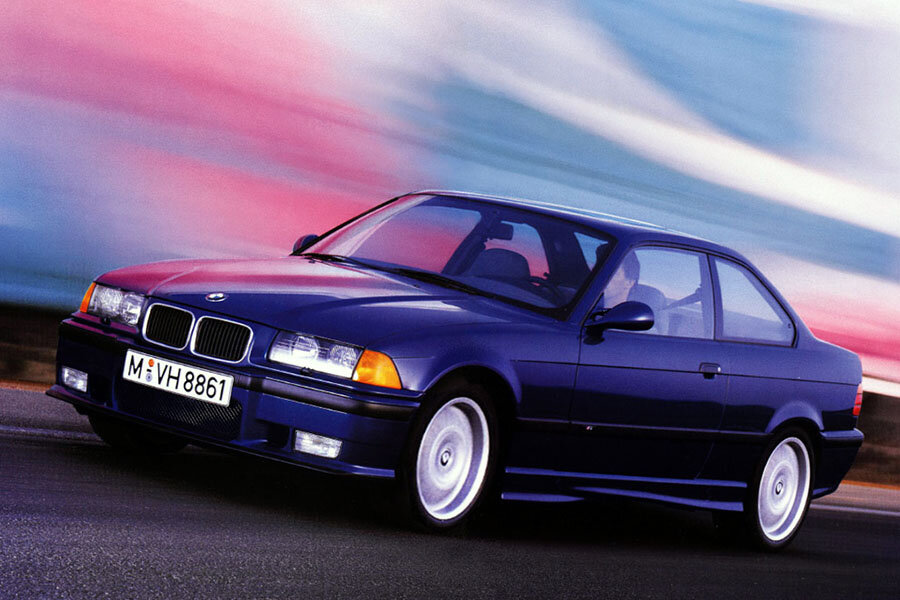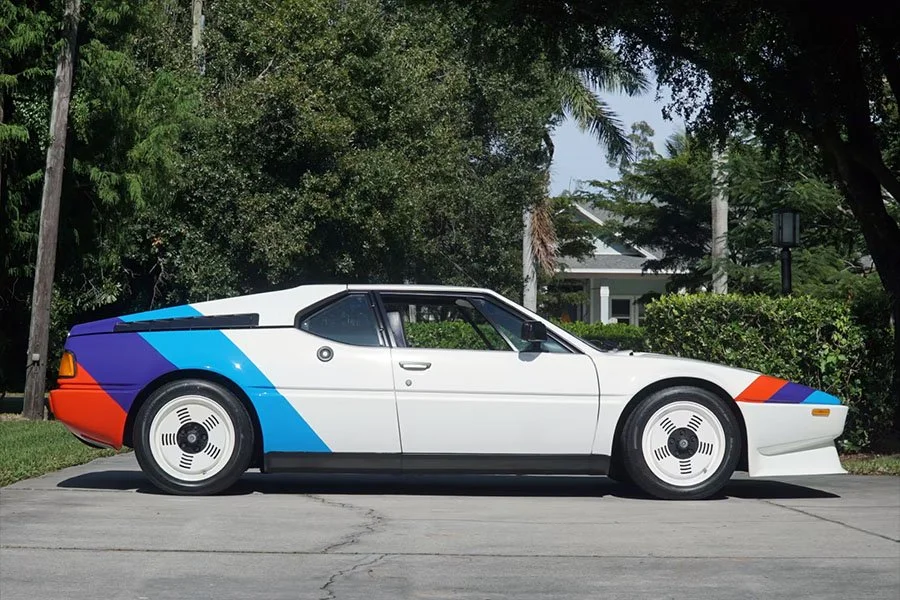Guide: BMW E36 M3 3.0 - a Historical & Technical Appraisal
/BACKGROUND
BMW’s original Motorsport 3-series, the E30 M3, was arguably the best small sports saloon of its era.
A race-bred homologation special, 5000 E30 M3s were originally built to qualify for Group A competition where the model proved extremely effective. Over the next few years, World, European, British, German, Italian and Australian touring car championships fell the M3’s way.
Although 5000 production cars were required for Group A, the E30 M3 was sufficiently popular that nearly 18,000 were ultimately built.
This commercial success was a far cry from BMW Motorsport’s first attempt at reworking the parent company’s entry level model. Back in late 1973, the E20 2002 Tii had been transformed into the 2002 Turbo. Unfortunately, only 1672 were built as the car’s launch coincided with the onset of the Oil Crisis.
The E30 M3’s popularity was a surprise given some of its obvious drawbacks: it was only available in left-hand drive, was very expensive and its four cylinder engine was not particularly refined. Additionally, the Cabriolet variant was only manufactured in limited numbers while cars bound for the USA had to be watered down to meet emissions legislation.
Most of these issues would be addressed on its successor: the E36 M3.
The new car came with a straight six engine, a bigger bodyshell and could be ordered as a Coupe, Convertible or Saloon. Right-hand drive examples were available soon after production began but cars bound for the USA did still need toning down to meet environmental requirements.
Unlike its forebear, the new M3 was not created as a homologation special. This allowed BMW to target the car to a wider audience which proved a great success. By the end of production, 70,000 E36 M3s had been completed; 3.5 times more than its predecessor.
Because such a figure was well beyond the production capability of the BMW Motorsport factory in Garching, E36 M3s were built on the regular 3-series assembly line at Regensburg.
The E36 M3 was launched in Coupe form at the Paris Motor Show in October 1992. Convertible and Saloon variants were available from March and June of 1994 respectively.
CHASSIS
Under the skin, each new M3 started life as a standard E36 bodyshell.
Suspension was the familiar MacPherson strut layout at the front with a multi-link ‘Z-axle’ at the rear.
To this, BMW Motorsport added a host of upgrades.
The suspension geometry was revised, progressive-rate springs and stiffer dampers were fitted and the ride height was lowered by 30mm. Reinforced spring mounting points were installed along with modified track arms, reinforced front stub axles, thicker anti-roll bars and rear wheel bearings from the 850i.
Enormous ventilated brake discs were much bigger than before: 315mm at the front and 313mm at the rear. The M3 also came with re-tuned ABS and a larger brake master cylinder.
New M Double Spoke cast alloy wheels measured 17 x 7.5-inches and were shod with Michelin MXX3 tyres.
A standard 62-litre E36 fuel tank was located underneath the rear seats.
ENGINE / TRANSMISSION
The M3’s Type S50 B30 engine was developed from the dual overhead camshaft 24-valve M50 unit found in contemporary 3 and 5-series BMWs.
It featured a cast iron block with a new ported and polished light alloy head.
Whereas the M50 engine was available in 1991cc or 2494cc configurations, the M3 motor was taken out to 2990cc. Compared to the 2.5-litre M50 unit, bore was increased from 84mm to 86mm and stroke was extended from 75mm to 85.8mm.
The M3 engine also came with an array of special parts.
Among the most significant was VANOS; a variable valve timing system for the inlet camshaft that improved torque and fuel efficiency.
Additional equipment included throttle bodies for each cylinder, heavy-duty valve springs, Bosch Motronic M3.3 engine management and a dual mass flywheel. Compression was increased from 10.0:1 to 10.8:1.
A free-flow intake and exhaust system (with dual catalysts) was also fitted.
The S50 B30 engine was easily identifiable thank to its ‘BMW M-POWER’ script on the crackle black cam cover.
Peak output was 286bhp at 7000rpm and 236lb-ft at 3600rpm.
For comparison, the 2.5-litre M50 engine produced 189bhp at at 6000rpm and 181lb-ft at 4700rpm.
Transmission was via a close-ratio five-speed ZF gearbox, single plate Sachs clutch and limited-slip differential.
BODYWORK
Cosmetically, a series of subtle exterior modifications improved airflow and gave a more sporting appearance.
BMW’s M Sport body kit fitted to the M3 principally comprised custom bumpers, skirts and wing mirrors.
The modified front bumper featured an extended lip spoiler, body-coloured mesh grille and supplementary driving lights. Down each flank, body-coloured side skirts incorporated a distinctive crossover design while the rear bumper was home to a deep apron.
Aerodynamically styled wing mirrors were unique to the new model.
M3 badges were added to the tailgate and exterior door mouldings.
Compared to the E30 M3 (which featured attention-grabbing spoilers and brawny wheelarch extensions), the E36 M3 was a far more discreet proposition.
INTERIOR
Most of the interior architecture was adopted from the regular E36.
Perhaps the most significant departure was the M3’s new high-backed M Design ‘Vader’ seats. In standard form, they were upholstered with alcantara suede bolsters and velour fabric centres. Motorsport stripes were added to the vertical face of each seat.
Other new equipment included a three-spoke M-Technic II steering wheel, red instrument needles and a BMW Motorsport-branded gear lever and instrument panel. The economy gauge fitted to normal 3-series’ was replaced with an oil temperature read out.
Black headliner was standard and BMW Motorsport kick plates with the M3 logo were added to the door sills.
OPTIONS
Optional extras included forged M Double Spoke wheels, a rear spoiler, leather upholstery, air conditioning, metallic paint, heated front seats, cruise control, headlight wash / wipe and rear head rests. Wider 8.5-inch rear wheels were a particularly desirable addition.
Electric front seats, an electric sunroof and electric rear windows could also be specified and there was a choice of two steering wheel options: a leather sports steering wheel or an airbag steering wheel.
Stereos were normally fitted by dealers.
WEIGHT / PERFORMANCE
The E36 M3 Coupe weighed 1460kg. It had a 0-62mph time of 5.5 seconds and top speed limited to 155mph. Without the artificial limiter in place, 175mph was reputedly possible. In-gear acceleration was good enough to match Ferrari’s flagship production model: the 512 TR.
EARLY PRODUCTION CHANGES
Production of right-hand drive M3 Coupes started six months after launch in March 1993.
In September 1993, the previously optional four-spoke airbag steering wheel was made standard and a passenger airbag was added to the options list.
USA VERSION
Although BMW initially had no plans to sell the E36 in the USA (mainly because the 286bhp engine could not meet American emissions standards), requests from customers eventually saw that decision reversed.
The US-spec. M3 was launched at the Los Angeles Motor Show in January 1994 and production started in March. It came with a special Type S50 B30 USA engine that featured a lower compression ratio (10.5:1) and a less complex cylinder head with the two-stage VANOS timing system from the M50 motor. The USA engine did not come with individual throttle bodies for each cylinder either.
Peak output was 240bhp at 6000rpm and 225lb-ft at 4250rpm.
Standard equipment included air conditioning, leather trim, a ten-speaker stereo, driver and passenger airbags, a third brake light, metallic paint and an economy gauge instead of the oil temperature read out. Spring and damper rates were slightly softened.
Although BMW introduced an M3 Convertible in March 1994 (and the Saloon from June ‘94), the US-spec. M3 was only ever offered as a Coupe.
E36 M3 CONVERTIBLE
The E36 M3 Convertible sold around the rest of the world was based on the standard 3-series cabriolet which had been developed as an open car from scratch. It had a windscreen strong enough to act as a roll bar plus an additional protection hoop that was automatically activated if the car tipped passed a certain angle.
The M3 Convertible came with an electric roof, Nappa leather upholstery and forged M Double Spoke wheels as standard.
M3 Convertibles did not get the ‘Vader’ seats or extended front lip spoiler although the former could be re-instated via the options list along with a wind deflector and hardtop.
The Convertible weighed 80kg more than the Coupe.
Right-hand drive examples were produced from September 1994.
E36 M3 SALOON
Three months after the Convertible arrived, BMW introduced a body style that had never previously been offered on the M3 platform: a four-door Saloon.
Production started in June 1994.
The M3 Saloon used the same front and rear bumpers as the Coupe but its side sills lacked the distinctive crossover treatment. All four doors were steel and the suspension was slightly softened for a more comfortable ride.
Standard equipment on the Saloon included special M Contour II wheels, Nappa leather upholstery, front and rear centre armrests, chrome interior door release catches and map pockets.
Saloons also came with a burr walnut centre console plus matching gear knob and door handles. ‘Vader’ seats were optional and weight was 75kg up on the Coupe.
Production of right-hand drive M3 Saloons started in October 1994.
SUBSEQUENT PRODUCTION CHANGES
During September 1994, a revised climate control system and halogen headlights were introduced on all variants.
In December 1994, BMW started to offer the US-spec. M3 Coupe with an optional ZF five-speed automatic gearbox.
At the same time, a Luxury Pack was introduced for the US market.
Externally, the Luxury Pack included the side sills and M Contour II wheels from the M3 Saloon. In addition to the already high specification of US M3s, the Luxury Pack added eight-way electric seats, leather door panels, chrome interior door handles, an on-board computer, cruise control, a front armrest and extended wood trim to included the centre console and door pulls.
END OF PRODUCTION
BMW stopped production of the M3 Coupe and Saloon in July 1995. 15,436 Coupes had been built (3152 of which were right-hand drive). Of the 1283 Saloons manufactured, 415 were right-hand drive.
The Convertible stayed in production until August 1995. A total of 1975 were built of which 572 were right-hand drive.
Production of the US-spec. M3 Coupe continued until January 1996. 8515 manual cars were completed and 1705 automatics.
The three-litre E36 M3 was subsequently replaced by the 3.2-litre M3 Evolution.
Text copyright: Supercar Nostalgia
Photo copyright: BMW - https://www.bmw.com





































